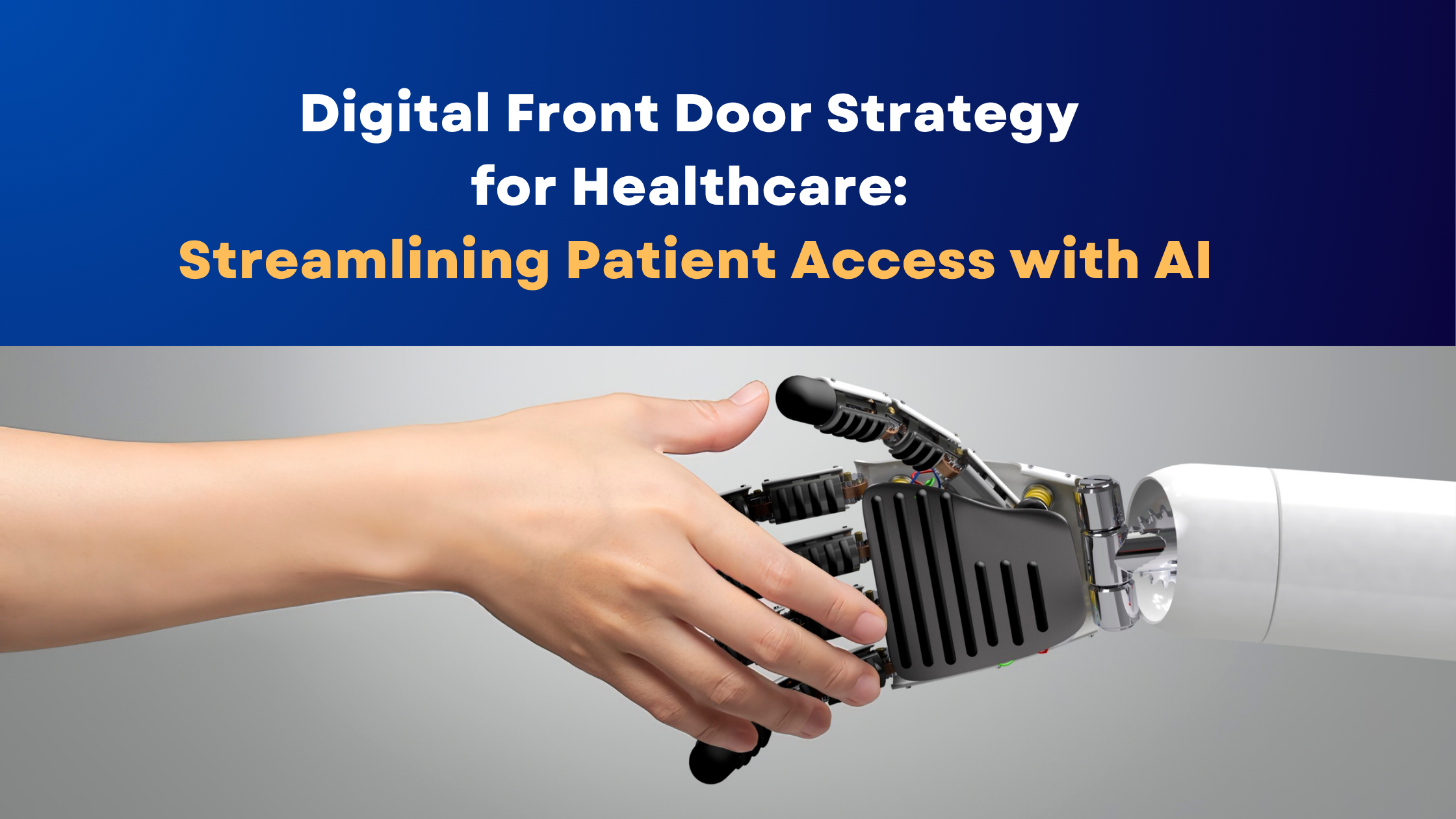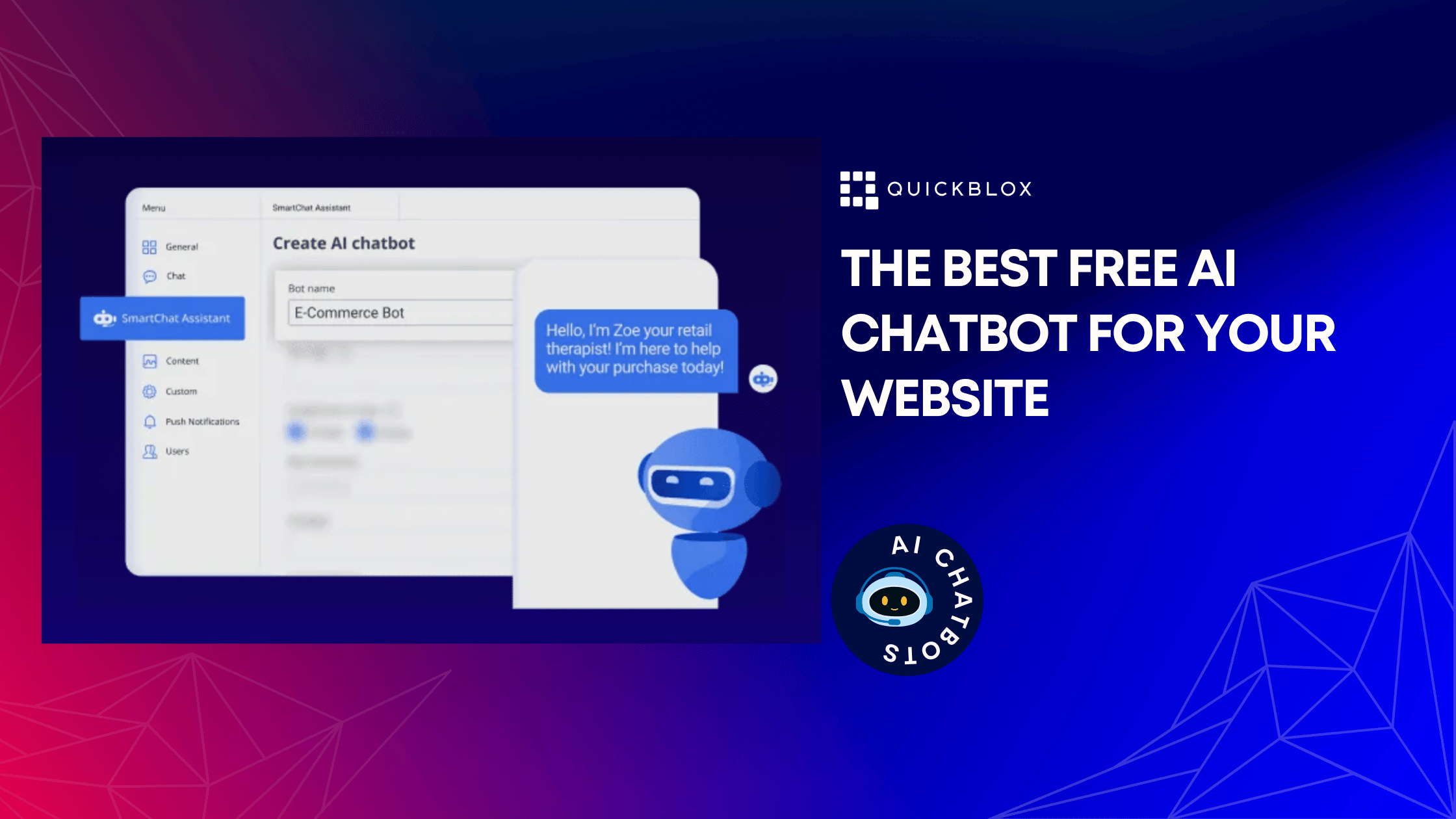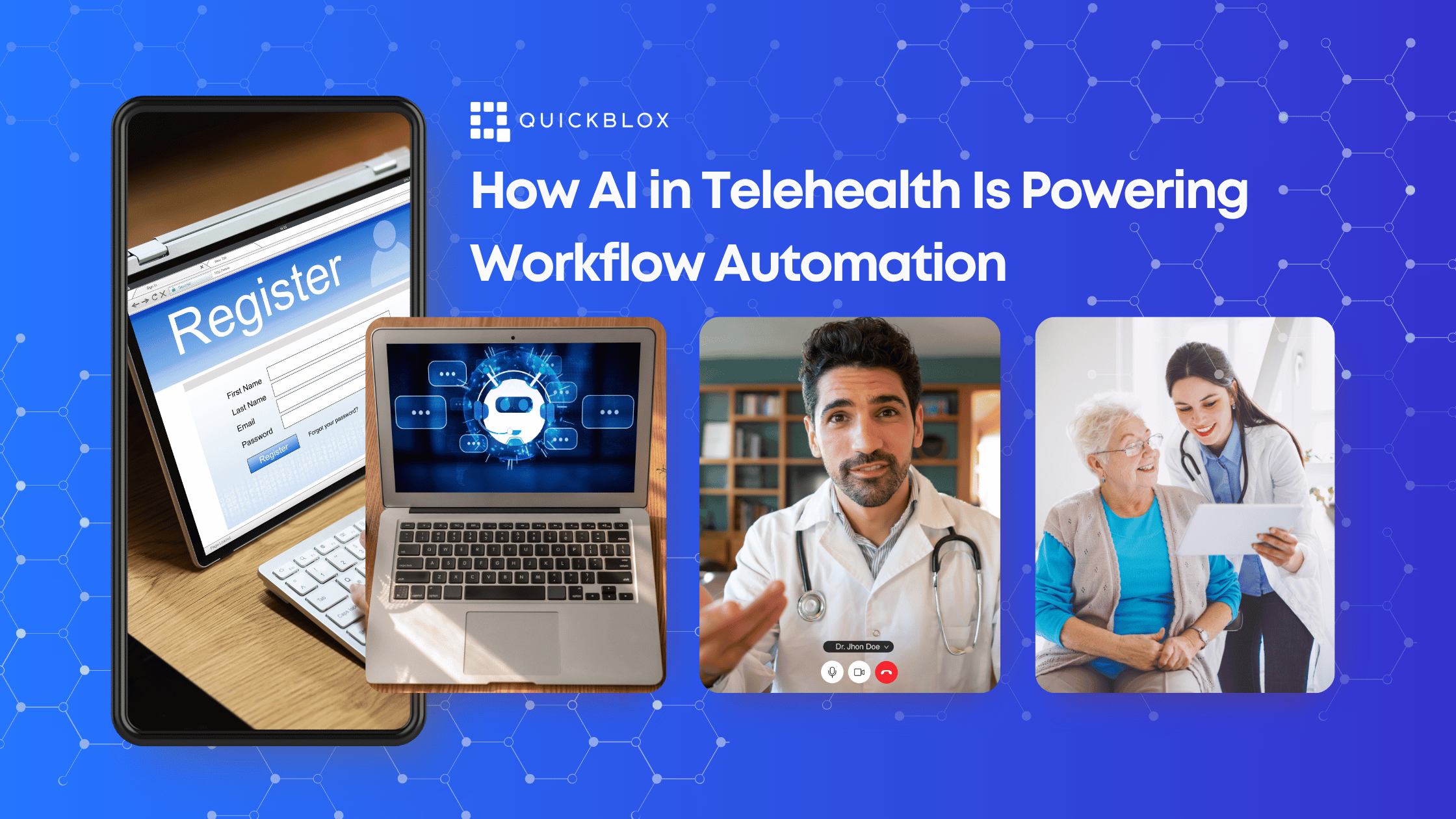
Summary: This article explores how a digital front door strategy is reshaping healthcare by making access to care more convenient and efficient. It covers the role of online patient intake forms, AI-powered chatbots, and other digital tools in streamlining workflows, improving patient experiences, and reducing staff workload. You’ll also find real-world examples, key benefits, and practical tips for getting started.
Table of Contents
Introduction
Let’s be honest—getting in the door with a healthcare provider can still be a pain.
Long phone waits. Paper forms. Playing calendar tag with the receptionist. Meanwhile, in other parts of life, people are booking haircuts, groceries, and taxis in a few taps. Naturally, patients are starting to expect the same kind of convenience from their care providers.
That’s where the idea of a digital front door comes in.
It’s not just about putting a website online. It’s about making that first point of contact—whether it’s scheduling an appointment, filling out intake forms, or asking a quick question—simple, fast, and accessible.
Some providers start small, like replacing clipboards with online forms. Others go bigger, using AI chatbots to guide patients through online patient intake, triage, or FAQs. Either way, the goal is the same: make it easier to get care, while lightening the load on staff.
In this article, we’ll walk through what a digital front door actually means, how it improves access, and how AI tools can help turn it into something that works better for everyone—patients included.
What Is a Digital Front Door in Healthcare?
You’ll hear the phrase digital front door used often in healthcare circles, but when you boil it down, it’s about one thing: helping patients get through that first step of care—online, and ideally, without hassle.
That first touchpoint might be a clinic website. It could be a chatbot. Some providers have apps, others use online forms. The tool itself isn’t what defines the digital front door—it’s whether it lets people move forward without needing to call, wait, or show up in person just to get started.
For patients, this could mean:
- Booking an appointment when it’s convenient for them.
- Filling out intake or insurance forms before the visit.
- Sending a quick message with a question—no phone call required.
- Reviewing instructions or test results afterward, without needing to ask again.
From the provider side, it tends to lighten the load. Fewer phone calls, shorter wait times, less paper being shuffled around. You’d be surprised how much time gets saved just by letting someone self-schedule or complete forms ahead of time.
It’s worth saying—this isn’t about using one fancy tool. A digital front door is more of a layered setup. Most places don’t launch everything at once. Often, it starts with just one thing (like digitizing intake forms), and then more gets added over time, depending on what fits.
The main thing? You’re making it easier for people to access care, without forcing them to jump through hoops. It doesn’t have to be perfect, but it should remove barriers that don’t need to be there in the first place.
Common Barriers to Patient Access
Before we talk about digital solutions, it’s worth looking at what patients are still up against when trying to get care. In most cases, the issue isn’t just the care itself—it’s the steps they have to take to reach it.
Here are a few of the common roadblocks:
Long Wait Times (Just to Reach Someone)
Patients often spend 15, 20, even 30 minutes on hold—just to book a basic appointment. For people juggling work, kids, or health concerns, that delay can be the difference between following through or giving up.
Complicated Scheduling Systems
Many clinics still rely on back-and-forth phone calls, voicemail tag, or clunky online portals that are hard to navigate. If it takes more than a few clicks (or minutes) to lock in a time, a lot of people will walk away.
Too Much Paperwork, Too Late
Filling out forms in the waiting room is frustrating—not to mention easy to forget or rush through. Patients often arrive unprepared, and staff end up scrambling to catch up before the appointment starts.
Lack of Clear Communication
When patients don’t know what to expect—or aren’t sure what to bring, where to go, or what comes next—it adds stress. And for staff, that confusion usually turns into more phone calls or missed steps.
Language and Accessibility Gaps
If the process is only available in English or requires tech-savvy navigation, it excludes a portion of your community. That’s a huge access issue that doesn’t get talked about enough.
These barriers might seem small on their own. But together, they create friction that can stop patients from following through—especially for first-time visitors or those managing ongoing care.
The digital front door exists to smooth these pain points out—before they turn into no-shows or lost trust.
If there’s one part of the patient experience that’s still clinging to old habits, it’s intake.
Even at clinics with modern equipment, patients often show up and get handed a clipboard with a stack of forms. It’s rushed, messy, and far from ideal—especially when someone’s already stressed about a health issue.
That’s why so many providers are switching to digital patient intake.
Instead of filling things out in the waiting room, patients can take care of paperwork before they arrive—at home, on their phone, whenever they have a minute. It gives them time to think through their answers, look up details, and avoid the last-minute scramble.
For staff, it’s a win too:
- There’s less data entry at check-in.
- You can catch missing information early.
- It cuts down on scanning and manual filing.
- Mornings run smoother because people move through faster.
Some providers are seeing real change. One New York–based clinic reported that digital pre-registration helped reduce their check-in process by more than 50%, freeing up front-desk staff and speeding up patient flow.
Patients also seem to prefer it. In one recent survey of 1,000 patients, nearly 68% said they’d rather complete forms online ahead of their visit than fill them out in person.
The great thing? You don’t need to overhaul your entire tech stack to make it work. Starting with forms is often the simplest entry point into a larger digital front door strategy—and it’s one of the upgrades patients will notice immediately.
While digital forms alone are a huge step up from paper, the real gains happen when you add AI into the mix. Some AI tools don’t just collect information—they can guide patients, adapt to their inputs, and catch missing data in real time. It’s a more dynamic experience for users, and it reduces follow-up work for staff.
Platforms like QuickBlox make it easier than ever to build secure AI-enhanced digital workflows. Their HIPAA-compliant tools support customizable intake forms and even allow AI-powered medical chatbots to guide patients through the process—
step by step—so nothing gets missed.
That’s just the beginning. AI is also reshaping how patients ask questions, book appointments, and get support—even outside office hours.
Learn more about – Streamlining Patient Intake with HIPAA-Compliant AI Solutions
Bringing in AI: Smarter Patient Engagement
We’ve already seen how AI can enhance intake forms—guiding patients through the process, flagging issues early, and saving time for staff.
But that’s just one piece of the puzzle.
AI is also transforming how patients interact with clinics before and after they complete a form—whether it’s answering questions at midnight, sending follow-up instructions, or helping someone navigate next steps after an appointment.
One of the clearest examples? AI chatbots.
These aren’t the clunky bots of a few years ago. Today’s AI-powered assistants can answer nuanced questions, help patients find the right department, explain next steps, and even follow up after a visit. And they’re available 24/7—which makes a difference when someone’s awake at 2 a.m. trying to figure out if they need to reschedule or refill a prescription.
Learn more about – AI Medical Chatbots: Revolutionizing Patient Care in Healthcare
Real-World Examples
- UCHealth in Colorado introduced their virtual assistant “Livi” using Avaamo’s conversational AI. Nearly half a million patients have engaged with Livi, and it handles over 20,000 inquiries per month with a user success rate of 97%.
- In the Mid and South Essex NHS Foundation Trust (UK), an AI-powered assistant reduced missed appointments (DNAs) by approximately 30% over six months, saving staff hundreds of hours and significantly increasing care capacity.
- At Somerset NHS Foundation Trust, their pilot AI assistant managed enough booking tasks to save an estimated 600 staff hours per week, projecting annual savings of more than £450,000.
Smarter with Every Interaction
AI chatbots don’t simply fetch information—they learn. Over time, they get better at understanding patient intent, offering more relevant responses, and delivering smoother interactions.
And it’s not just about answering questions. The best systems combine AI chatbots with automated intake tools—so a patient might start by chatting with a bot, then get guided through pre-visit forms or symptom checkers, all in the same flow.
Platforms like QuickBlox make this kind of experience possible. Their AI-powered solutions allow healthcare teams to customize both the chatbot and the intake journey, ensuring patients get clear, timely help—without bouncing between disconnected systems.
This kind of automation doesn’t replace care. It simply clears the noise, so real care can happen more smoothly.
Key Benefits of a Digital Front Door Strategy
It’s not about replacing people. It’s about removing the friction. If you’ve ever stood at reception with a clipboard, trying to remember your insurance number, you’ll get it. A digital front door doesn’t fix everything—but it makes a lot of things less painful.
Here’s where it helps most.
1. Patients Get What They Need, Faster
Book. Reschedule. Ask a quick question. All without waiting on hold or hoping someone checks the voicemail. That kind of access matters. Actually, 80% of patients say ease and convenience count more than bedside manner when picking a provider.
2. Less Busywork for Staff
Phones ringing nonstop. Forms half-filled. Details missed. It builds up. But when things like check-in or FAQs are handled before the patient walks in? It’s calmer. People can focus again. Less rushing. Less double-entry. More actual care.
3. Smoother Conversations
Not everyone wants to call. Especially not for small stuff. So having options—chat, text, web portals—opens the door. Some tools even guide people without them needing to ask twice. And when a bot hands off to a real person at the right time? That’s when it starts to feel human.
4. Fewer Mistakes, Better Compliance
We’ve all seen messy handwriting. Or forms missing the one field you really needed. Digital tools—especially ones that check forms in real time—cut that down. Info gets to the right place. Nothing sits in a drawer. And you’re still covered for compliance.
5. Data That Actually Helps
Maybe most people stop halfway through your form. Maybe everyone’s asking the same question every Monday morning. That’s good to know. Once you’ve got data flowing in, you can spot patterns—and fix things before they become problems.
Getting Started: How to Build Your Digital Front Door
You don’t have to fix everything at once.
Honestly, the best digital front door strategies don’t even try. They just start where things feel clunky—and go from there.
Step One: Fix What’s Clearly Broken
For most clinics, intake is still messy. Paper forms, rushed answers, people trying to remember their medication list while standing at the counter. Switching to online forms makes that whole process cleaner. It gives patients time. It gives staff fewer things to double-check. Same goes for appointments—if your front desk is juggling schedules all day, that’s a sign.
Layer in AI—Don’t Lead With It
AI sounds exciting. But it works best when it’s solving a specific problem. Start with something simple: answering common questions with a chatbot, or guiding people through digital forms. You don’t need the fanciest tool on day one. Just something that takes one task off someone’s plate.
Later, if it’s working? You add more.
Choose Tools That Won’t Box You In
Some platforms are flashy—but not flexible. Or worse, not secure enough for healthcare. Look for tools that are HIPAA-compliant apps, that can scale as you grow, and that let you control how they work. QuickBlox checks all those boxes. You can build out secure chat, smart intake forms, even an AI assistant—without needing a full dev team to get started. And because it’s modular, you only use what you need.
One Step Is Enough to Begin
It’s easy to get overwhelmed by tech. Don’t. Pick one thing—one form, one task, one workflow. Make that part smoother. Then move on to the next.
That’s how the real change starts.
Future Outlook: What’s Next for the Digital Front Door in Healthcare
Change isn’t coming. It’s already happening.
More clinics have stopped handing out clipboards. Patients are skipping phone calls and using chat. AI is picking up the slack—not loudly, just doing things in the background.
But that’s only part of the shift.
Soon, the digital front door won’t be a bonus—it’ll be expected. Patients will choose providers who make things easy. And they’ll leave the ones who don’t.
What to Expect Next
- AI tools that go further—predicting needs, not just answering.
- Systems that link things together—forms, calendars, messages, all in one flow.
- More tailored experiences—where patients aren’t just a number in the system.
Even smaller practices will adopt this. Probably faster than people think. Because the tools are getting more affordable, and setup doesn’t require a big technical team anymore.
Learn more – How Startups Can Leverage HIPAA-Compliant Telemedicine Solutions for Success
A Few Signs You’re Falling Behind
- People keep calling because they can’t get what they need online.
- Your staff spends hours redoing things that software could’ve handled.
- Other clinics nearby are offering more streamlined care—and patients are noticing.
Waiting for the “right time” is risky. You don’t need a full rebuild. But you probably do need to start.
QuickBlox is helping providers make that jump. With ready-to-use tools for secure messaging, AI chat, and online intake, clinics can move fast—without giving up control or safety.
Final Takeaway: Start Small, Move Smart
You don’t need to be a hospital system with a giant IT budget to build a better patient experience. A digital front door isn’t about flashy tech—it’s about making things easier, smoother, and less frustrating for everyone who walks through (or clicks into) your clinic.
Start with one thing. An intake form. A simple chatbot. A smarter way to handle messages.
And make sure whatever tools you choose can grow with you.
QuickBlox gives you the flexibility to do exactly that—with secure, HIPAA-compliant tools for chat, video, intake forms, and AI-powered assistants. Whether you’re just getting started or ready to scale, it’s a platform that lets you stay in control while improving how care begins.
Ready to open your digital front door?
Explore QuickBlox’s healthcare tools and start building better patient connections—one click at a time.
Talk to a sales expert
Learn more about our products and get your questions answered.
Contact sales
FAQs about the Healthcare Digital Front Door
What is a Digital Front Door Strategy in Healthcare?
A digital front door strategy in healthcare is kind of like putting a welcome mat online. It means using digital tools—forms, chat, messaging—to make care easier to access. Instead of juggling calls and paperwork, patients can do things from their phone or laptop. Not fancy. Just more practical.
How Do Online Intake Forms Improve the Patient Experience?
Online patient intake helps cut the chaos. People fill out forms before they show up—not while stressed in the waiting room. It gives them space to think, double-check details, and not feel rushed. Clinics get cleaner data, faster check-ins, and fewer headaches. Honestly, it’s a win both ways.
What is the Role of AI in Digital Patient Intake?
In digital patient intake, AI works kind of like a quiet helper. It nudges people along, catches missing answers, maybe rephrases tricky questions. It’s not doing the whole job—but it makes the process smoother. Especially when it connects with chat or guides patients step by step.
How Does Digital Patient Intake Ensure HIPAA Compliance?
The tech itself doesn’t guarantee privacy. But when you use platforms designed for healthcare, digital patient intake can absolutely be HIPAA-compliant. That means encryption, secure storage, limited access. Tools like QuickBlox handle that side—so clinics can focus on care, not regulations.
What Are the Benefits of Implementing a Digital Front Door Strategy for Healthcare Providers?
With a strong digital front door healthcare setup, a lot of little things stop being problems. Patients can book, check in, and ask questions without waiting. Staff aren’t buried in paperwork. No-shows drop. And honestly, it just feels more modern—like a clinic that gets how people live now.








